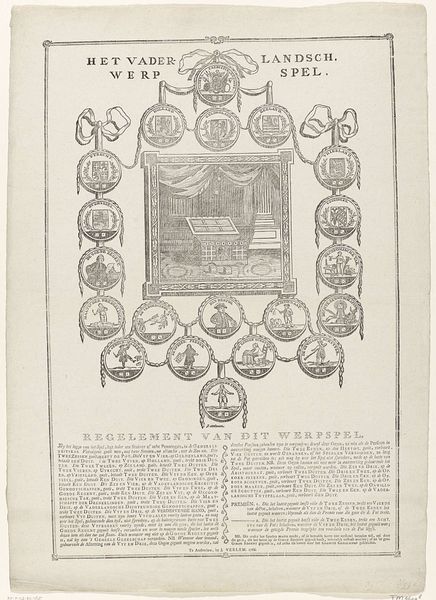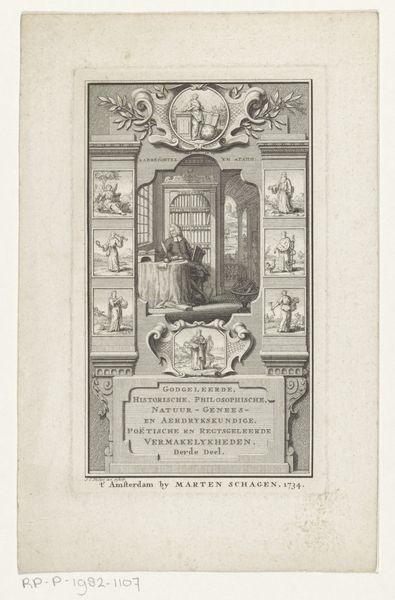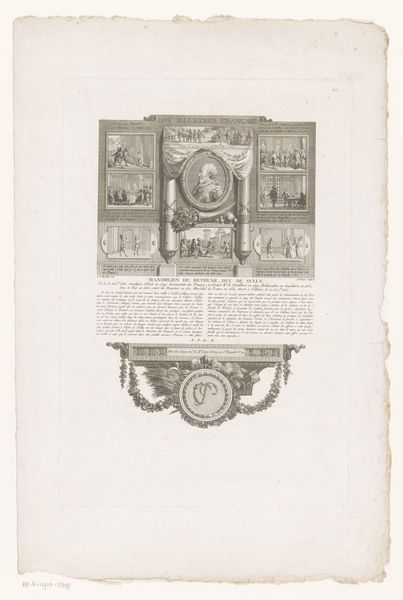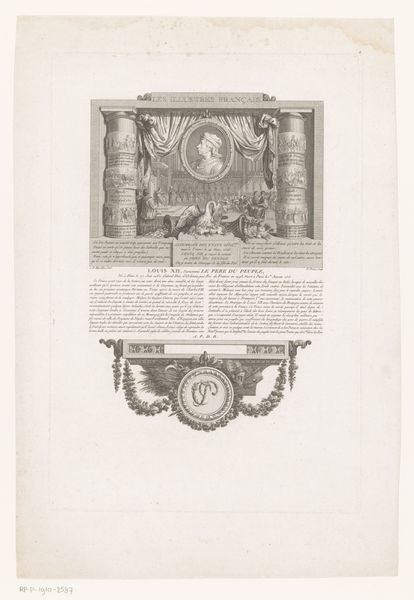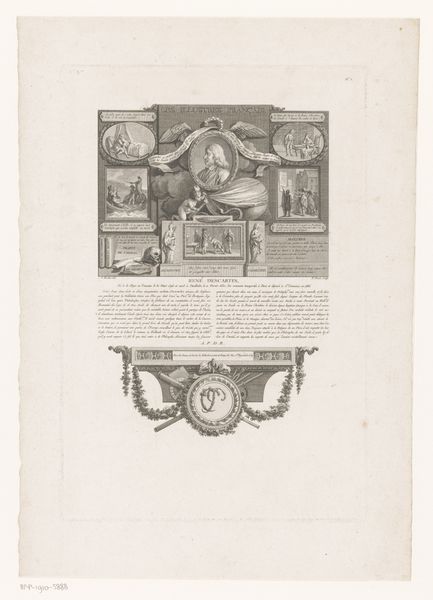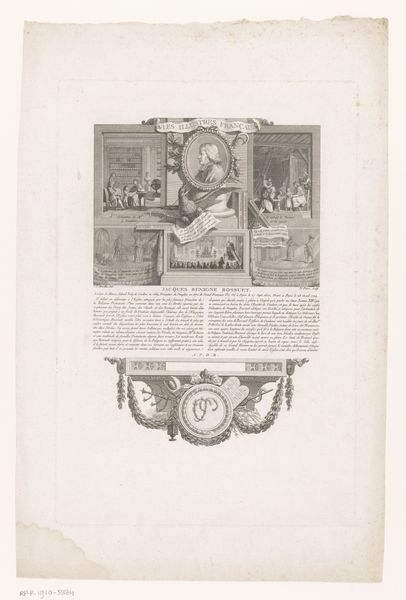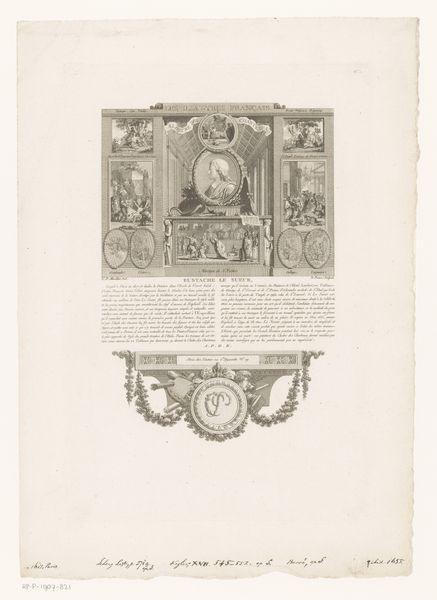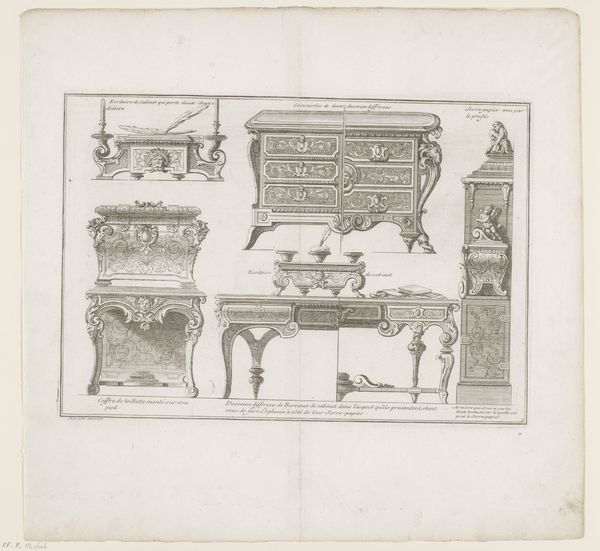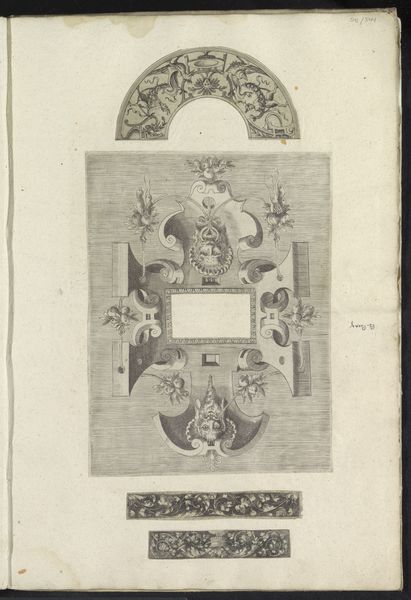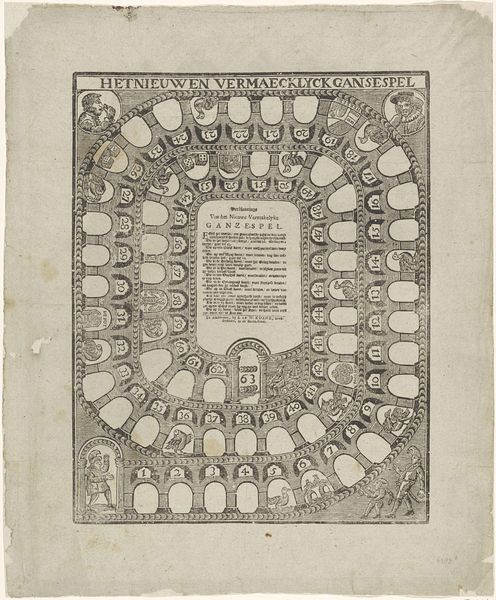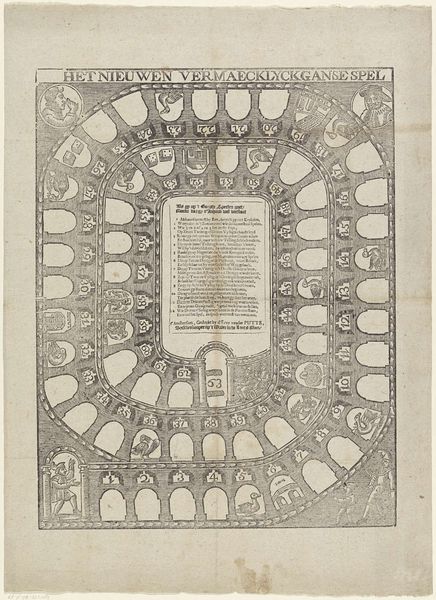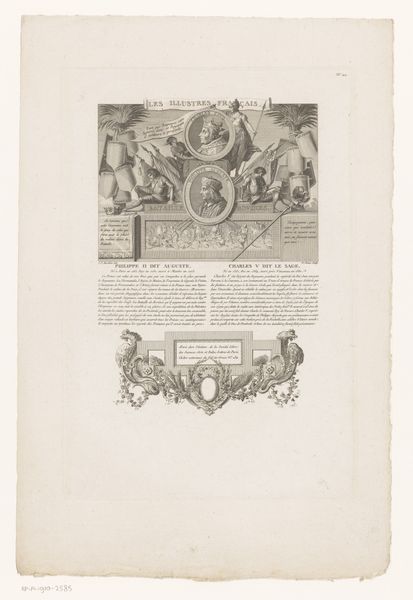
Dimensions: height 415 mm, width 320 mm, height 588 mm, width 417 mm
Copyright: Rijks Museum: Open Domain
Curator: Here we have a rather intriguing engraving titled "Het vaderlandsch. / werp- / spel", which translates to "The National Throwing Game". It was created by J. Voorman in 1786. Editor: Well, it certainly looks more complicated than any game I've played lately. It’s very symmetrical, almost obsessively so, but somehow it gives off this whimsical vibe. Like a board game designed by a particularly fastidious dreamer. Curator: Indeed. This print functions as both a game and a political commentary, very much a product of its time. Note the elaborate arrangement of medallions encircling the central image, each depicting various virtues, social classes, or regions. Editor: Ah, I see! They're all linked together as if parts of a larger system. It's interesting how the artist employs that geometric arrangement. A bit sterile perhaps, but it’s also hinting at something interconnected. Are those medals all related to the Dutch Republic at the time? Curator: Precisely. The central image is meant to suggest a "game board," but it seems as though the objective isn't just playful, but also very political and philosophical; something to "play out" through discussions, social action. The lower text lays out a specific way to play the depicted game, adding another dimension. Editor: It’s almost as though you're not just playing a game, but enacting something, some form of…nationhood? A really weird way to promote national values if you ask me. It has a very orderly Baroque quality to it, all these intricate patterns... But behind that, I can sense some of the unrest brewing during that period, simmering beneath the surface of proper Dutch society. Curator: That’s a astute way to read it. The piece serves to reflect social tensions using the guise of leisure. How class functions and relates in the Netherlands is as central to the work as the material culture—the very production of the work and playing of it implies privilege and also invites discussion of moral obligations of that privilege. Editor: Exactly. I still feel like there is this slightly melancholic spirit, like a fancy lament for something. That neat presentation hides an elegy, even a warning. Curator: I'm glad we had the chance to unpack it together. A curious object that holds within its geometric, controlled lines so much history and nuance. Editor: Indeed. I leave feeling the 1780s in the Dutch Republic might have had much more going on under the surface of things than I gave it credit for.
Comments
No comments
Be the first to comment and join the conversation on the ultimate creative platform.
